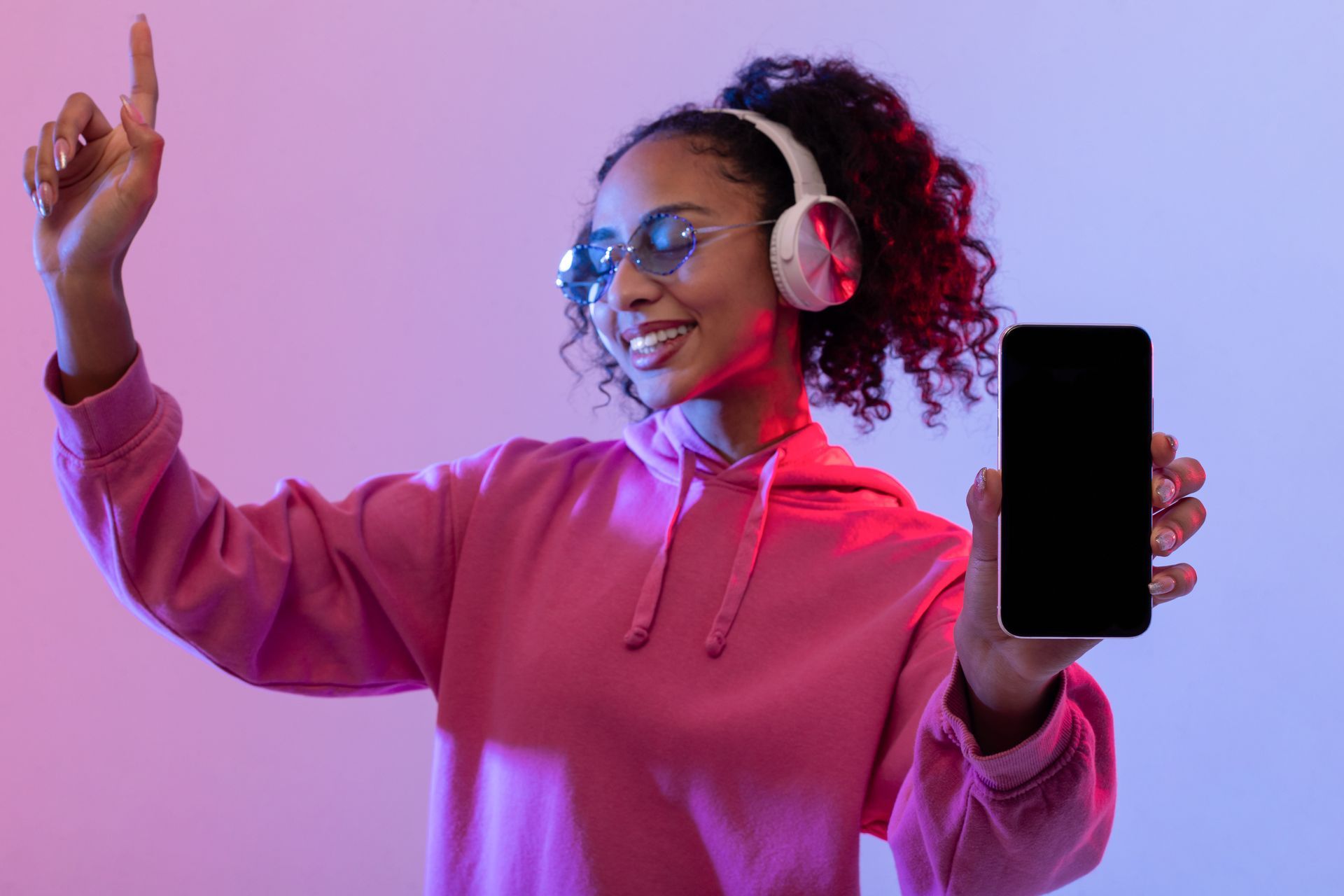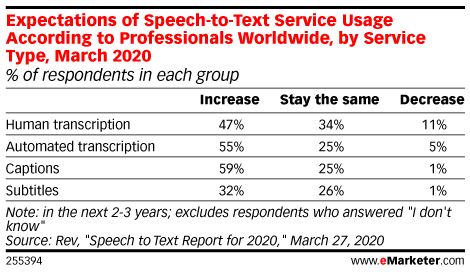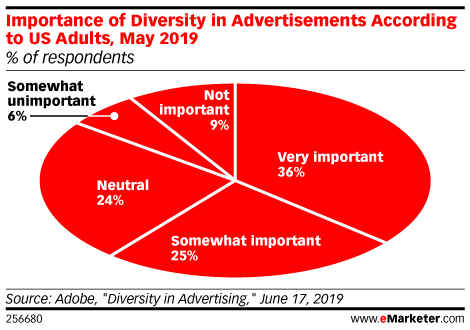5 Ways to Implement Inclusive Marketing Practices in 2021
Inclusive marketing is no longer just a buzzword -- it’s here to stay as U.S. audiences grow increasingly diverse and expect more from brands and businesses across the country. Keep reading to learn more about how you can implement inclusive practices in your digital marketing strategy. You won’t want to miss this!
Here’s a recap of what we’ll be discussing:
- 1. Reach Multicultural Audiences In-Culture with Purposeful Messaging
- 2 .Engage with Consumers of All Backgrounds and Abilities
- 3. Use Digital Marketing to Connect with Audiences Across Generations
- 4. Keep Up with the Latest Current Events to Maintain Mindful Messaging
- 5. Find Ways to Get to Know and Give Back to your Local Community
Questions or comments?
Contact us
here.
1. Reach Multicultural Audiences In-Culture with Purposeful Messaging
It’s no secret that multicultural audiences have been disproportionately impacted by the crisis (Read our
post
on the impact of Covid-19 within the Latino community for more info). Messaging directed at these audiences should be especially empathetic by recognizing that a return to normalcy will vary for everyone, and groups that were hit harder might need more time to recover.
For example, older, Spanish-dominant Hispanics have been more at-risk during the pandemic, and they often rely on their younger, more digital-savvy, and bilingual family members to help them with their purchase decisions. Additionally, Hispanic families tend to live in multi-generational households more often than the general population, which also shapes their perception of marketing messages that do not align with a collectivist culture and perspective.
Since many have been estranged or isolated from members of their family, many older Spanish-dominant Latinos have been unable to interact with businesses that only advertise in English. By considering the possibility of both in-language and in-culture marketing messaging, brands can connect with these consumers to gain their business and loyalty.
However you reach multicultural consumers, brand activism and inclusivity is not simply a short-lived hashtag or marketing campaign in response to one or two social events going on at the time. To be both relevant and effective, businesses are encouraged to make a sustained commitment to make an impact while maintaining transparency about how they’re taking steps to be more inclusive. Not only can this aid in effecting positive change, but it can also play a role in growing as a business.
Remember that broad terms such as Hispanic, Black, or Asian are used to describe a consumer base at a high level, but actual engaging campaigns must be intentional and nuanced. Check out our exclusive
Cultural Affinity model
to get a better idea of how we develop nuanced campaigns to reach U.S. Latino audiences.
The sooner businesses understand these key points, the sooner they can reap the rewards as we head into an increasingly diverse future.
2. Engage with Consumers of All Backgrounds and Abilities
At its core, inclusive marketing aims to reach consumers who have historically been left behind, including audiences who have disabilities. For instance, many Deaf individuals often can’t receive marketing messages that don’t include or have the option to include closed captions.
While there is still a lot of room for improvement, fortunately, more strides are being made in order to make way for inclusivity. In their
“2020 State of Captioning''
report, transcription provider 3Play Media surveyed professionals across industries and found that 64% reported captioning all or most of their online video content, up from 58% in 2019.
They also found that respondents’ confidence in captioning compliance understanding had increased from 22% in 2019 to 32% in 2020. Similarly, a March 2020 survey by Rev, an audio-to-text transcription service, found that many professionals worldwide expected to increase their use of transcription, captions, and subtitles in the next several years.
3. Use Digital Marketing to Connect with Audiences Across Generations
While reaching consumers across generations is a great start to being more inclusive in your marketing campaigns it doesn’t mean much unless it’s purposeful. Interested in this topic? Read our post about reaching Latinos across generations. For instance, in May, 75% of consumers thought it was important for corporations to give back to the community during the pandemic. Despite messaging aimed to make a difference, half of consumers across age groups felt that the “we’re in this together” marketing messages weren’ genuine.
40% of Millennials and Gen Z audiences believed that brands only showed up to capitalize on the coronavirus crisis. Evidently, consumers are increasingly in support of businesses showing social responsibility -- but brands need to walk the walk too, or face the possibility of losing customers who decide to “break up” with them.
When it comes to baby boomers, it’s clear that they aren’t as digitally-behind as people make them out to be. A recent Google insights report found that in 2020, due to increased access to technology and distribution, older adults flocked to YouTube more than ever before. Their research shows that baby boomers -- those born between 1946 and 1964 -- name YouTube as their
most commonly cited platform
for learning something new.
Other Google
insights
from 2020 include:
- Communal experiences enhanced how viewers watch: YouTube viewers sought out opportunities to connect with others through content, suggesting that interactive experiences are on the rise and here to stay.
- Cowatching: When stay at home orders went into effect, “cowatching” provided a safe way to consume content and live events in online groups.
- Personal growth: Many viewers got through the early months of the pandemic by developing new skills.From gardening to playing chess, videos with variations of “beginner” in the title earned more than 7 billion views and average daily views of these videos have increased more than 50% since March 15, 2020, compared to the rest of the year.
- Social change: As public interest in social justice increased, such as support for the Black Lives Matter movement in the U.S., popularity also grew on YouTube. In the first 10 days of June alone, views of videos related to Black Lives Matter surged more than 4X compared with 2019.
- Allyship: As people pledged their support for ongoing social movements, video viewership around allyship and advocacy topics spiked. Within the first week of June, views of videos with “how to be an ally” in the title increased 23% from viewership in all of May.
Whether it’s increased time spent on YouTube, Connected TV, social media, etc., digital use and behavior go hand in hand with current events, making online communities just as strong among consumers.
In many ways, 2020 was a much needed wake up call for brands and businesses to fully embrace digital capabilities in order to stay open, make a difference, and make meaningful connections with consumers across a multitude of generations and backgrounds.
4. Keep Up with the Latest Current Events to Maintain Mindful Messaging
Since current events influence consumer behavior and perception, it’s crucial to stay up to date and informed. Multicultural consumers in the U.S. are often bicultural, meaning that they consider themselves both American and also a part of their cultural group. Plus, bicultural Americans are increasingly growing in numbers and gaining more spending power.
Market research agency
ThinkNow
has been tracking the Bidimensional Identity Measure (BIM) for the past several years among a nationally representative sample of Hispanics, Blacks, Asians, and non-Hispanic Whites. The measure, which partnered with Dr. Jake Beniflah and the Journal of Cultural Marketing Strategy, proposes that multigroup identity must be measured bi-dimensionally to account for the multi-racial collective identity, multi-ethnic, and multicultural U.S consumer.
The BIM model consists of two subscales: the Multigroup Ethnic Identity Measure (MEIM-R) and American Identity Measure (AIM), which simultaneously measure one’s ethnic and American identity to help corporations understand the multi-dimensionality of the U.S. population.
Data findings highlighted a decline in American Identity Measure (AIM) key metrics among Hispanic, Black, and Asian respondents from August 2019 to October 2020, while AIM measures remained relatively stable among non-Hispanic White respondents. Respondents were asked to rate a series of statements regarding their American identity in August of 2019 and again in October 2020.
The study’s
data
showed:
Black respondents experienced the sharpest drop in feeling like they have a strong sense of belonging to the U.S., from 67% in August of 2019 to 53% in October of this year.- Asians experienced a 5% drop in affinity, from 66% to 61%.
- Hispanics and non-Hispanic whites stayed relatively consistent in their sentiment.
Wondering how this plays a role for your business? Because cultural identity and a sense of belonging in the U.S. can play an important role in gauging multicultural audience beliefs and preferences, staying up to date with the latest national and local current events can inform your business’ messaging for more thoughtful and effective marketing campaigns.
To get a better idea, see how the events that unfolded in 2020 affected the digital marketing space by reading our
post.
5. Find Ways to Get to Know and Give Back to your Local Community
A May 2019
survey
by Adobe found that many U.S. adults now see diverse and inclusive ads as a requirement, not a bonus. Survey findings showed:
- 62% of U.S. adults said diversity in a brand’s advertising had at least some impact on the way they perceived that brand’s products and services.
- 24% reported that diversity in a brand’s advertising had a “major” impact on their perception of that brand.
- More than six in 10 (61%) respondents said diversity in ads was somewhat important or very important, and 38% said they’d be more likely to trust a brand that showed diversity in its advertising.
- Non inclusive brands risk backlash from consumers who feel maligned or marginalized by them. More than one-third (34%) of US adults said they either temporarily or permanently stopped supporting brands they felt did not represent them.
- Of surveyed consumers, significantly higher percentages of LGBTQ (58%), African American (53%), and Hispanic respondents (40%) stopped supporting brands that they felt did not represent them.
Although every company is different, inclusive and accessible ads can provide a solid foundation to get started with inclusive and diverse marketing.
To sustain momentum and make a lasting difference, many experts agree that best practices include diversifying and empowering your teams, creating experiences that resonate and are authentic to your audiences, and committing to doing better.
As a local business owner, this could include partnering with a multicultural marketing agency to build better, more inclusive campaigns, or organizing events to give back and get to know your local community. Learn more about using local business strengths to your advantage
in our article
here.
Whichever routes you choose, there’s no doubt that implementing inclusive marketing practices is a win-win. Not only can it make audiences feel seen and included, but it can also drive business growth for years to come.
How to Get Started with Digital Marketing
There are many ways to get started with digital marketing, but if you’re looking to partner with an experienced team who can guide you through the process, we’ve got you covered. Feel free to contact one of our expert digital marketing consultants or find a location near you today.
General
questions? We’re happy to answer those too. Looking forward to hearing from you!
















